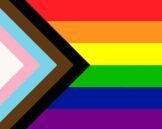We always tell our heteronormative friends and allies that there may not be an actual exam to pass to be gay BUT we are expected to absorb an awful lot of additional knowledge. Take flags for example. The original rainbow flag was created in 1977 by Gilbert Baker, an artist, activist, and openly gay military veteran. Tasked by Harvey Milk, to create a flag for the queer community, Baker created a rainbow flag with eight different colors. Each color in the flag also had a specific meaning.
Hot Pink symbolizes sex, Red equals life, Orange symbolizes healing, Yellow stands for sunlight, Green represents nature, Turquoise equals magic & art, Indigo stands for serenity
Violet represents the spirit of LGBTQ people
Since then the rainbow flag has lost two of the colors but meanwhile, the community seems to have added a plethora of banners and bunting that seem to cover the whole queer spectrum.

One of the most easily identifiable is the Bear Flag….. officially the International Brotherhood of Bears ….. designed in 1995. The colors of the flag—dark brown, orange/rust, golden yellow, tan, white, gray, and black—are meant to include the colors of the furs of animal bears throughout the world.
 Another one that is used quite extensively now is the TRANSGENDER Flag It was first created in 1999 by Monica Helms, a transgender woman. Light blue and pink are featured because they’re the traditional colors associated with baby boys and girls, respectively. The white stands for those who are intersex, transitioning or those who dont identify with any gender.
Another one that is used quite extensively now is the TRANSGENDER Flag It was first created in 1999 by Monica Helms, a transgender woman. Light blue and pink are featured because they’re the traditional colors associated with baby boys and girls, respectively. The white stands for those who are intersex, transitioning or those who dont identify with any gender.
 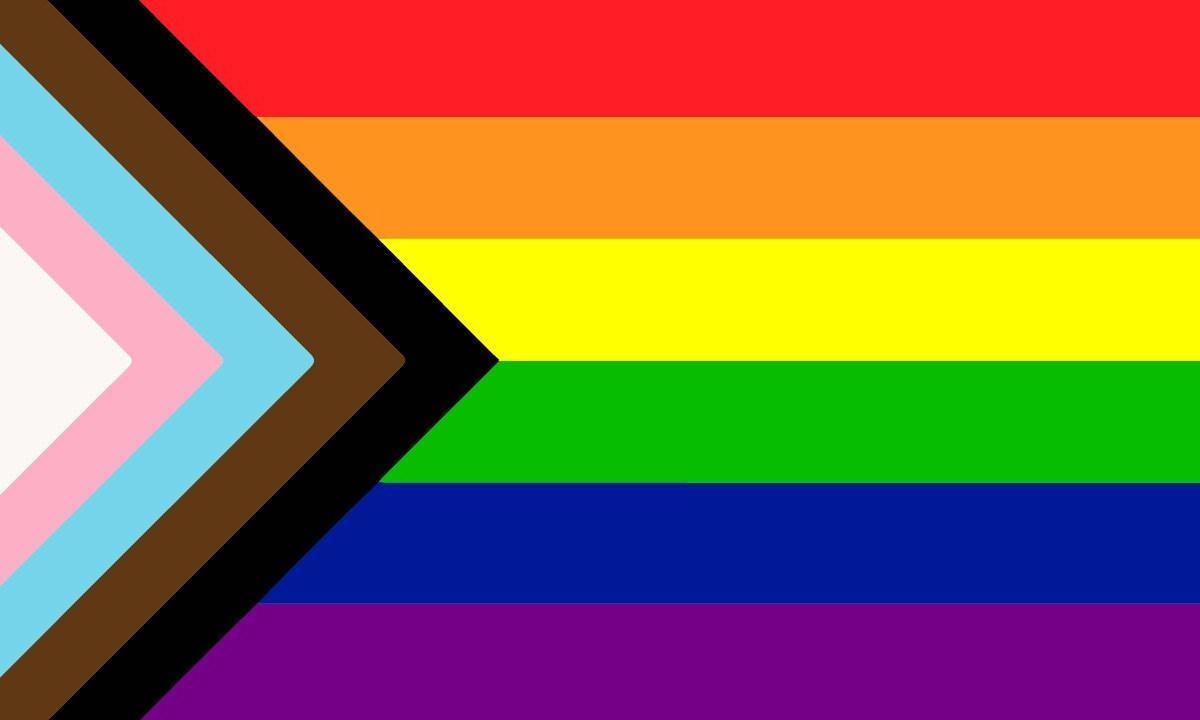
The Progress Pride Flag was created in 2018 by nonbinary artist Daniel Quasar, and is based on the iconic 1978 rainbow flag. With stripes of black and brown to represent marginalized LGBTIQ+ people of color and the triad of blue, pink, and white from the trans flag, the design represents diversity and inclusion.
 The Lesbian Flag is one of the flags very few people know about. This flag features different shades of pink and sometimes comes with a red kiss on it to represent lipstick lesbians. This flag was created by Natalie McCray in 2010. Some lesbians oppose this flag because of its exclusion of butch lesbians but no other flag has as much popularity as this one.
The Lesbian Flag is one of the flags very few people know about. This flag features different shades of pink and sometimes comes with a red kiss on it to represent lipstick lesbians. This flag was created by Natalie McCray in 2010. Some lesbians oppose this flag because of its exclusion of butch lesbians but no other flag has as much popularity as this one.
The colors represent the following: Darkest Orange: Gender nonconformity, Middle Orange: Independence Lightest Orange: Community White: Unique relationships to womanhood Lightest Pink: Serenity and peace Middle Pink: Love and sex Darkest Pink: Femininity
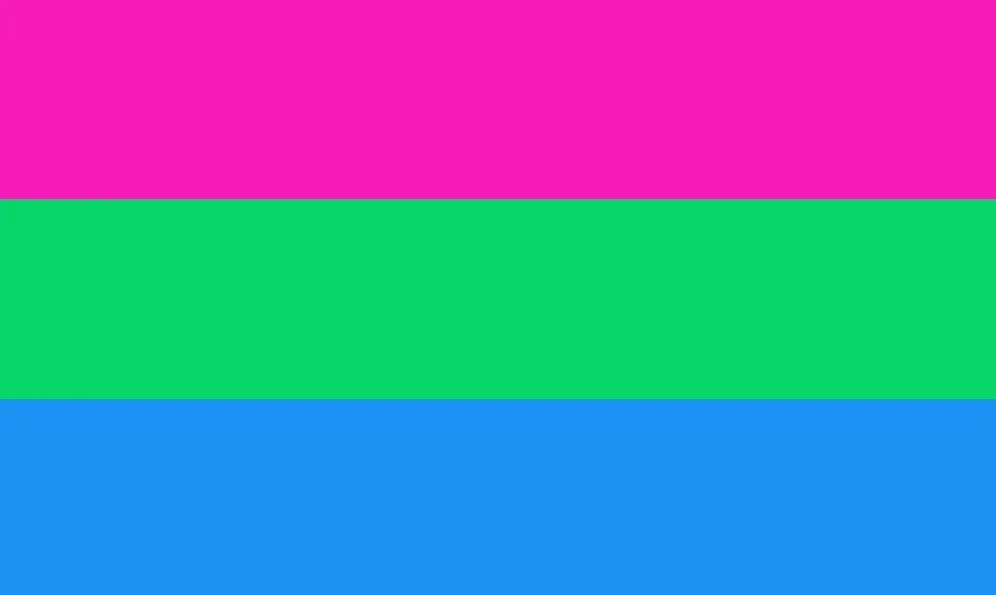
The polysexual flag was created in 2012 by a Tumblr user named pansexualoctopus. The user created the flag in response to the pansexual flag, which they felt did not accurately represent their own identity. The user wanted a flag that represented their attraction to multiple genders, but not all genders. The Polysexual flag colors meaning are – Pink represents an attraction to women, green represents an attraction to non-binary / enby people, and blue represents an attraction to men
 Bisexual Pride Flag created by bisexuality activist Michael Page in 1998, this flag has three horizontal stripes—pink, purple, and blue—and represents bisexuality. The pink stripe is for attraction to the same gender, the blue for attraction to a different gender, and the purple represents attractio
Bisexual Pride Flag created by bisexuality activist Michael Page in 1998, this flag has three horizontal stripes—pink, purple, and blue—and represents bisexuality. The pink stripe is for attraction to the same gender, the blue for attraction to a different gender, and the purple represents attractio
n to two or more genders.
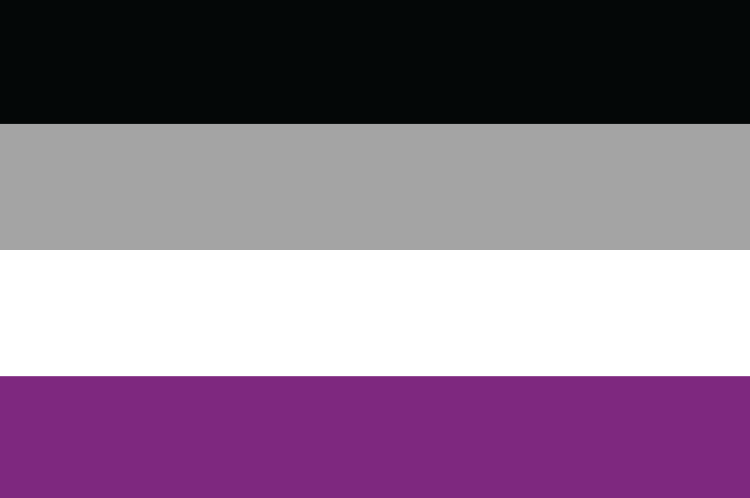 Asexual Pride Flag was first introduced in 2010 by a group of asexual activists, this Pride Flag was created to empower the asexual community. Consisting of four horizontal stripes in black, grey, white, and purple, black represents asexuality, gray is for the grey area between asexuality and sexuality, white for sexuality and lastly, the purple stripe represents community.
Asexual Pride Flag was first introduced in 2010 by a group of asexual activists, this Pride Flag was created to empower the asexual community. Consisting of four horizontal stripes in black, grey, white, and purple, black represents asexuality, gray is for the grey area between asexuality and sexuality, white for sexuality and lastly, the purple stripe represents community.
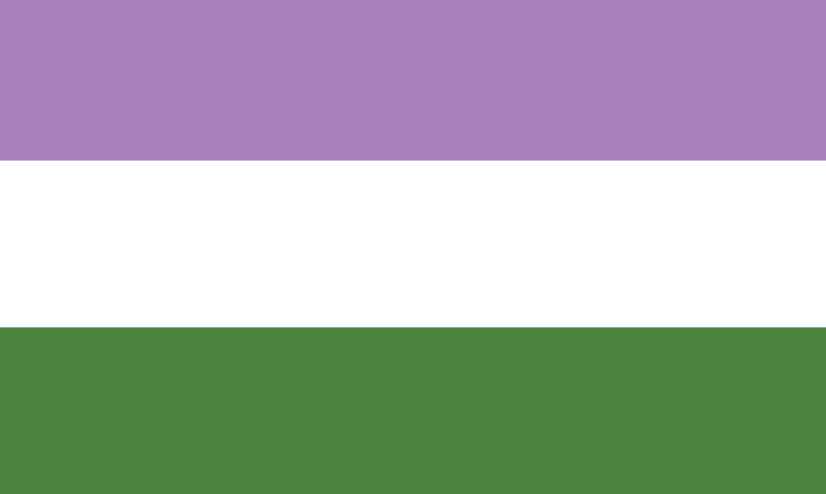 Genderqueer Pride Flag was first introduced in 2011 by genderqueer activist Marilyn Roxie, and was created to represent those who identify as a combination of genders or who have a gender that is outside the traditional male and female binary. The flag consists of three horizontal stripes: purple, white and green with purple representing androgyny and other queer identities, white for agender identities or having no gender and green for those who are non-binary.
Genderqueer Pride Flag was first introduced in 2011 by genderqueer activist Marilyn Roxie, and was created to represent those who identify as a combination of genders or who have a gender that is outside the traditional male and female binary. The flag consists of three horizontal stripes: purple, white and green with purple representing androgyny and other queer identities, white for agender identities or having no gender and green for those who are non-binary.
 Genderfluid Pride Flag was introduced In 2012 by genderfluid activist JJ Poole. It was created to celebrate people who have a gender identity that is not fixed and can fluctuate in different circumstances and/or over time. This flag has five stripes in colors of pink, white, purple, black and blue and each one represents a different part of the genderfluid community. Pink is for femininity, white for neutrality, purple for a combination of male and female genders, black for the absence of gender and blue for masculinity.
Genderfluid Pride Flag was introduced In 2012 by genderfluid activist JJ Poole. It was created to celebrate people who have a gender identity that is not fixed and can fluctuate in different circumstances and/or over time. This flag has five stripes in colors of pink, white, purple, black and blue and each one represents a different part of the genderfluid community. Pink is for femininity, white for neutrality, purple for a combination of male and female genders, black for the absence of gender and blue for masculinity.
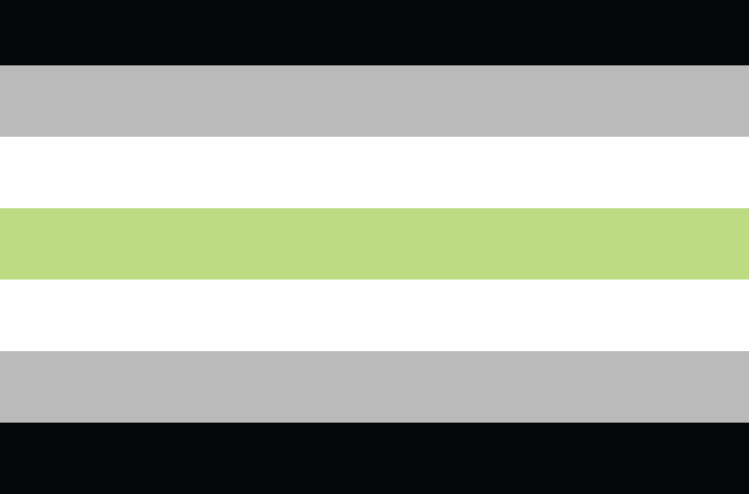 Agender Pride Flag was created by Salem X in 2014 and it represents people who don’t identify with any gender, are gender neutral or have no gender. The flag has seven horizontal stripes, two black stripes at the top and bottom of the flag, two grey stripes above and below the black, two white stripes next to grey and a green stripe in the middle. The black and white stripes represent the absence of gender, the grey stripes are for those who are semi-genderless, and the green stripe represents non-binary folks.
Agender Pride Flag was created by Salem X in 2014 and it represents people who don’t identify with any gender, are gender neutral or have no gender. The flag has seven horizontal stripes, two black stripes at the top and bottom of the flag, two grey stripes above and below the black, two white stripes next to grey and a green stripe in the middle. The black and white stripes represent the absence of gender, the grey stripes are for those who are semi-genderless, and the green stripe represents non-binary folks.

